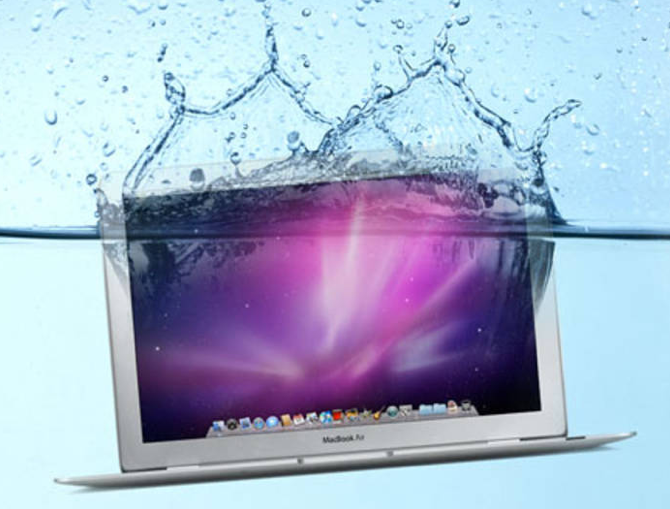How to bring a water damaged MacBook back to life.
There is a universal rule about electronics: “no food or drinks allowed nearby”.
While this applies in most work and school situations, the same is not always followed to the letter when it comes to casual settings like at home or on the go.

Water, or any kind of fluids can do all sorts of damage, once filtering under laptop keyboards, or inside the battery compartment, or anywhere live circuitry is exposed. Liquids not only can cause shorts and even battery damage, unchecked rust can accelerate the aging process of a MacBook, especially for components that are too expensive to replace, like the logic board. Fortunately, the damage from water spill or even immersion, can be curbed, if caught on time.
Step 1: Disconnect and power down your MacBook
This goes without saying: even if your MacBook is disconnected from its own power source, other devices connected to it by wire could still create a current. Remove all connected accessories and devices from all ports, including external displays.
Step 2: Dry the exterior of your MacBook
Using a towel, absorb as much liquid as you can from the laptop, especially from the keyboard and any other direct way into the aluminum body.
Step 3: disassemble the bottom panel
As scary a step as this might be, there is a strong chance that water or other liquids could be collecting inside the laptop in sufficient amounts to cause damage. While the laptop is off, the battery is still connected and live inside the laptop. The battery is one of the most difficult components to disassemble on a MacBook, so it’s important to be thorough, and taking the bottom cover off allows water to drain quicker, and establish better airflow for the internal components to dry.
Using gravity is the best way to drain as much water from the MacBook as possible, so the laptop should be propped face down, over a laptop stand, or other additional surface that can create a space between the keyboard and the surface the laptop is sitting on. With the display open, hanging at 90 degrees, allow any liquid to fall through the keyboard, and other crevices.
To accelerate the process, an air blower can be used, at a very low setting. One must use one’s own judgement when blowing hot air on any kind of electronics, as air flow that is too warm could damage contacts and other circuitry susceptible to excessive heat.
Step 4: The wait
Due to the complexity of any kind of electronics, especially laptop computers, any kind of moisture will take a couple of days to completely dry off. It’s important to use patience, as activating the laptop even a day earlier that it should be, could cause existing moisture to do damage by shorting contacts. One or two days should be sufficient, as long as the MacBook is kept in a dry and well ventilated environment.
Step 5: Cross your fingers and power up your MacBook
Once a couple of days have passed, the MacBook should be completely dry and ready to be tested. Do not immediately plug it to a power source. This might sound a bit paranoid, but no amount of caution is excessive when it comes with water and electronics. With the laptop still disconnected, and its bottom cover reassembled, power it up. If the laptop is not coming back to life, plug it into its power source and try again, as the battery could be drained. At this point the MacBook should either turn on and resume its regular operations.
Still no luck?
If the MacBook is still not powering up, there may be a number of problems, including shorted or fried circuitry. In that case, not much else can be done except letting the professionals at Portable One handle it!
The professionals at PortableOne.com offer a wide array of repair and support services. To contact one of our specialists, email us at support@portableone.com.